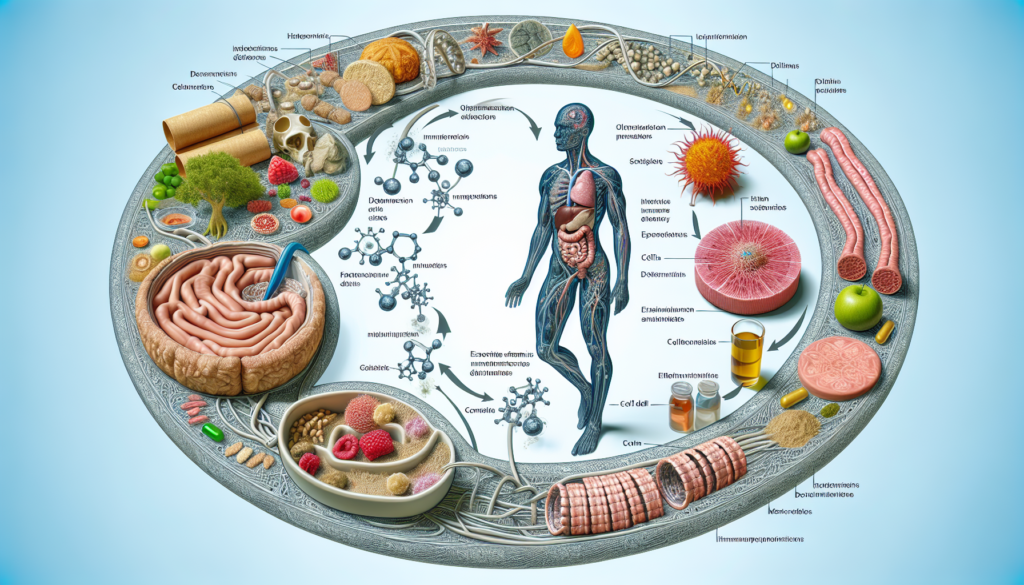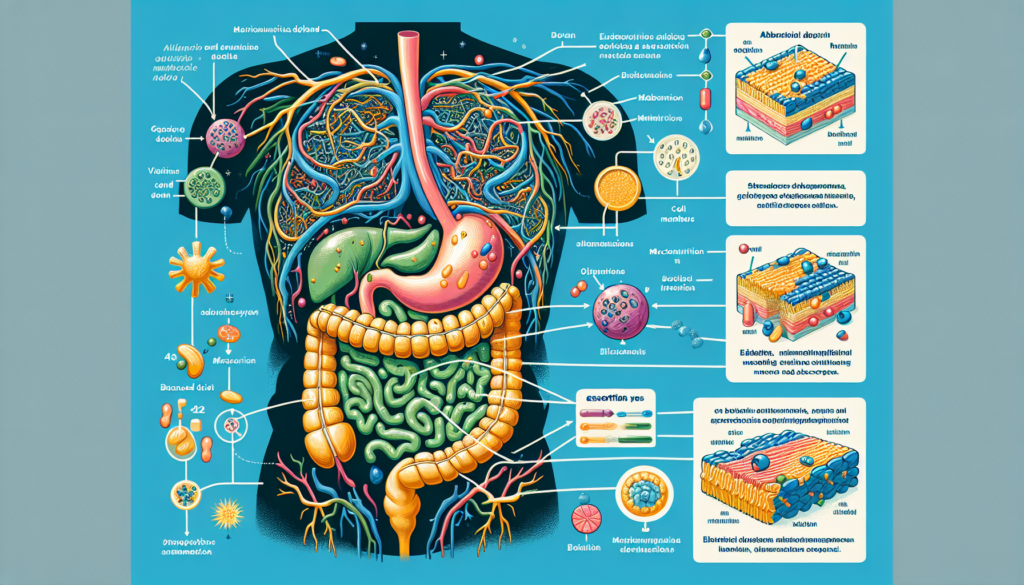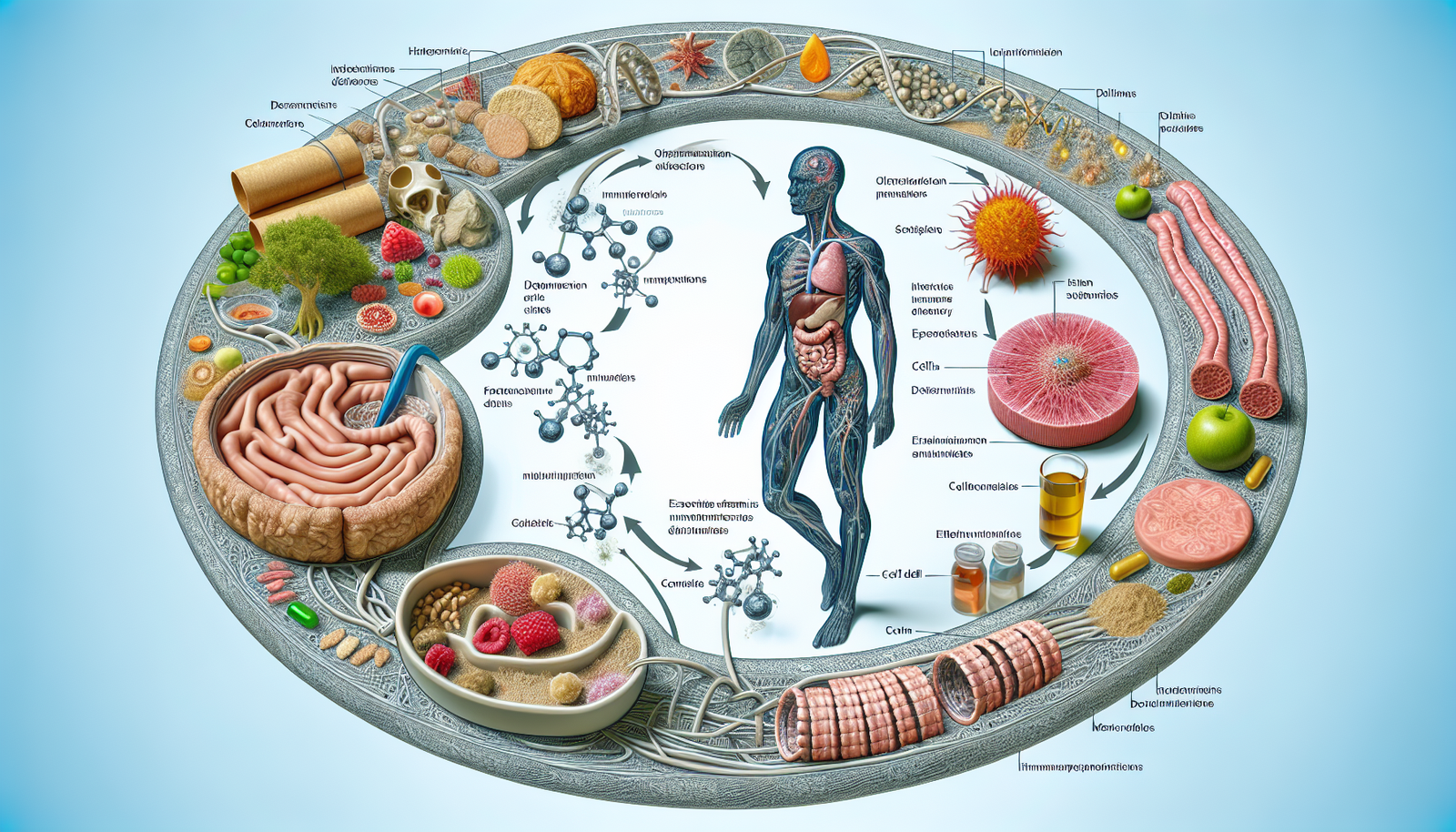Have you ever wondered how the nutrients from the food you eat actually get absorbed into your body? It’s a fascinating process that involves various intricacies and complexities. From the moment you take a bite to the final stage of absorption, your body goes through a series of steps to extract the essential nutrients it needs. In this article, we explore the nuances of nutrient absorption in the body, shedding light on the remarkable mechanisms that keep us nourished and energized. So, get ready to embark on a journey inside your body, where the magic of nutrient absorption takes place!

Factors Affecting Nutrient Absorption
When it comes to nutrient absorption in the body, there are several factors that can influence how efficiently our bodies absorb and utilize the nutrients from the foods we eat. These factors include the types of nutrients present, the health of our digestive system, the presence of other substances, age and gender, as well as medications and medical conditions.
Types of Nutrients
Nutrients can be broadly categorized into carbohydrates, proteins, and fats. Each of these macronutrients is essential for our overall health and wellbeing. In addition to macronutrients, there are also micronutrients, including vitamins and minerals, which are equally important for maintaining proper bodily functions.
Digestive System Health
The health of our digestive system plays a crucial role in nutrient absorption. The process starts with ingestion and digestion. When we consume food, it is broken down into smaller molecules through mechanical and chemical digestion in the mouth, stomach, and intestines. A healthy digestive system ensures that the food is properly digested, allowing for better nutrient absorption.
Presence of Other Substances
The presence of other substances in our digestive system can also impact nutrient absorption. For example, certain medications, such as antacids or laxatives, can interfere with the absorption of nutrients. Additionally, the presence of fiber in the diet can bind to certain nutrients, reducing their absorption. It is important to be mindful of these factors and ensure a balanced intake of medications and dietary substances to optimize nutrient absorption.
Age and Gender
Age and gender can also affect nutrient absorption. As we age, our bodies may become less efficient in absorbing certain nutrients, such as vitamin B12 and calcium. Similarly, women of childbearing age have higher iron requirements due to menstruation, and their bodies may absorb iron more effectively during this time. Understanding these variations based on age and gender can help in tailoring nutrient intake to specific needs.
Medications and Medical Conditions
Certain medications and medical conditions can impact nutrient absorption. For example, individuals with celiac disease or gluten intolerance may have difficulties absorbing nutrients due to damage to the lining of the small intestine. Inflammatory bowel diseases, such as Crohn’s disease and ulcerative colitis, can also affect nutrient absorption. It is important to work closely with healthcare professionals to manage any medications or medical conditions that may impact nutrient absorption.
Process of Nutrient Absorption
Understanding the process of nutrient absorption can provide insight into how our bodies utilize the nutrients we consume. The process involves ingestion and digestion, transportation to the bloodstream, absorption by the cells, and distribution to the body’s organs and tissues.
Ingestion and Digestion
The first step in nutrient absorption is the ingestion and digestion of food. As mentioned earlier, this process involves breaking down food into smaller molecules through mechanical and chemical digestion. The enzymes present in our digestive system play a crucial role in breaking down carbohydrates, proteins, and fats into their respective smaller components.
Transportation to the Bloodstream
Once the food is broken down into smaller molecules, these nutrients are transported to the bloodstream. This is primarily done through the small intestine, where the nutrients are absorbed into the bloodstream through the tiny blood vessels called capillaries that line the walls of the intestines.
Absorption by the Cells
After entering the bloodstream, the nutrients are absorbed by the cells. Different cells in our body have specific receptors that allow them to take up the required nutrients. These cells then utilize the nutrients for various bodily functions such as energy production, tissue repair, and growth.
Distribution to the Body’s Organs and Tissues
Once the nutrients are absorbed by the cells, they are distributed to the body’s organs and tissues through the bloodstream. This distribution ensures that the nutrients reach all parts of the body to support optimal functioning.
Types of Nutrient Absorption
There are different mechanisms through which nutrients can be absorbed by our cells. These include simple diffusion, facilitated diffusion, and active transport.
Simple Diffusion
Simple diffusion is the process by which nutrients passively move across the cell membrane from an area of higher concentration to an area of lower concentration. This process does not require any energy expenditure and allows for the absorption of small, non-polar molecules such as water and fat-soluble vitamins.
Facilitated Diffusion
Facilitated diffusion involves the use of transport proteins to aid in the movement of nutrients across the cell membrane. Unlike simple diffusion, facilitated diffusion can transport larger or charged molecules, such as glucose and certain ions, across the cell membrane. This process also does not require any energy expenditure.
Active Transport
Active transport is a energy-dependent process that requires the use of transport proteins and cellular energy, usually in the form of ATP. This mechanism allows for the absorption of specific nutrients against their concentration gradient, ensuring that the body gets the necessary molecules it needs for proper functioning.
Vitamins and Mineral Absorption
Vitamins and minerals are essential micronutrients that play critical roles in various bodily functions. The absorption process for these nutrients differs depending on their solubility.
Fat-Soluble Vitamins
Fat-soluble vitamins, including vitamins A, D, E, and K, require the presence of dietary fat for optimal absorption. These vitamins are absorbed along with dietary fat through the small intestine. Once absorbed, they are transported through the lymphatic system and stored in the liver and fatty tissues until they are needed by the body.
Water-Soluble Vitamins
Water-soluble vitamins, such as vitamin C and the B vitamins, are absorbed through the small intestine directly into the bloodstream. Unlike fat-soluble vitamins, water-soluble vitamins are not stored in the body and need to be consumed regularly through diet or supplementation.
Minerals
Minerals, such as calcium, iron, and zinc, are absorbed through various mechanisms depending on the specific mineral. For example, calcium absorption is facilitated by vitamin D, while iron absorption is influenced by factors such as vitamin C and the presence of intrinsic factor. Each mineral has its own unique absorption pathway and may be influenced by other dietary factors.
Factors Influencing Specific Nutrient Absorption
Certain nutrients have specific requirements or interactions that can impact their absorption. Understanding these nuances can help in optimizing nutrient intake and absorption.
Iron Absorption and Vitamin C
Iron absorption can be influenced by the presence of vitamin C. Vitamin C acts as a facilitator for the absorption of non-heme iron, which is found in plant-based foods. Consuming vitamin C-rich foods or supplements alongside iron-rich plant foods can enhance iron absorption.
Calcium Absorption and Vitamin D
Calcium absorption is closely linked to the presence of vitamin D. Vitamin D plays a crucial role in promoting calcium absorption in the intestines and ensuring its utilization by the body. Adequate sunlight exposure and consumption of vitamin D-rich foods can support calcium absorption and overall bone health.
Vitamin B12 Absorption and Intrinsic Factor
Vitamin B12 is a unique nutrient that requires the presence of intrinsic factor, a protein secreted by the stomach, for optimal absorption. Intrinsic factor binds with vitamin B12 in the stomach and allows for its absorption in the small intestine. Without sufficient intrinsic factor, individuals may experience difficulties in absorbing vitamin B12, leading to deficiencies.
Gastrointestinal Disorders and Nutrient Absorption
Certain gastrointestinal disorders can significantly impact nutrient absorption, leading to potential nutrient deficiencies.

Celiac Disease and Gluten Intolerance
Celiac disease is an autoimmune disorder characterized by the inability to digest gluten, a protein found in wheat, barley, and rye. The consumption of gluten triggers an immune response that damages the lining of the small intestine, impairing nutrient absorption. Following a strict gluten-free diet is essential for individuals with celiac disease to avoid nutrient deficiencies.
Inflammatory Bowel Diseases
Inflammatory bowel diseases (IBD), such as Crohn’s disease and ulcerative colitis, involve chronic inflammation of the digestive tract. This inflammation can impair the absorption of nutrients, leading to deficiencies. Managing inflammation and working with healthcare professionals to address specific nutrient needs are crucial for individuals with IBD.
Food Allergies and Intolerances
Food allergies and intolerances can also impact nutrient absorption. Individuals with food allergies, such as lactose intolerance, may have difficulties absorbing certain nutrients due to digestive issues. Identifying and avoiding trigger foods, while ensuring appropriate nutrient intake through alternative sources, is key in managing nutrient absorption in these cases.
Effects of Cooking and Processing on Nutrient Absorption
The way we prepare and process foods can also influence nutrient absorption.
Loss of Nutrients
Certain cooking methods, such as boiling or prolonged exposure to heat, can lead to the loss of water-soluble vitamins, including vitamin C and some B vitamins. Additionally, overcooking foods or using excessive amounts of water can cause minerals, such as potassium and magnesium, to leach out of the food, reducing their bioavailability.
Increase in Bioavailability
On the other hand, cooking and processing can enhance the bioavailability of certain nutrients. For example, cooking tomatoes actually increases the absorption of the antioxidant lycopene. Grinding grains into flour makes their nutrients more accessible to our bodies. However, it is important to strike a balance and not overcook or process foods excessively to retain their nutritional value.
Effects on Different Nutrients
Different nutrients may respond differently to cooking and processing methods. For example, cooking can enhance the availability and absorption of beta-carotene, a precursor to vitamin A, in foods such as carrots and sweet potatoes. On the other hand, high-temperature cooking methods, such as frying, can lead to the formation of harmful compounds, such as acrylamide, which may negate some of the nutritional benefits.
Nutrient Absorption and Gut Microbiota
The complex community of microorganisms in our gut, known as the gut microbiota, also plays a role in nutrient absorption.
Role of Gut Microbes
The gut microbiota is involved in various physiological processes, including nutrient metabolism. Certain bacteria in the gut have the ability to break down and ferment certain dietary fibers, producing short-chain fatty acids, which can provide a source of energy for our cells. Gut microbes can also help in the conversion of some nutrients, such as vitamin K and certain B vitamins, into their active forms.
Impact on Nutrient Absorption
The gut microbiota can also influence nutrient absorption. Some bacteria in the gut produce enzymes that aid in the breakdown of complex carbohydrates, making them more accessible for absorption. Additionally, the presence of certain bacteria in the gut can enhance the absorption of specific minerals, such as iron.
Dysbiosis and Nutrient Absorption
Imbalances in the gut microbiota, known as dysbiosis, can negatively affect nutrient absorption. Certain dysbiotic conditions, such as small intestinal bacterial overgrowth (SIBO), can impair the absorption of nutrients, leading to deficiencies. Maintaining a healthy and diverse gut microbiota through a balanced diet and lifestyle factors can help optimize nutrient absorption.
Improving Nutrient Absorption
There are several strategies that can be employed to improve nutrient absorption in the body.
Dietary Strategies
Following a balanced and varied diet that includes a wide range of nutrient-dense foods is essential for optimal nutrient absorption. This includes consuming a mix of macronutrients and ensuring adequate intake of vitamins and minerals through fruits, vegetables, whole grains, lean proteins, and healthy fats. Additionally, it is important to pay attention to specific nutrient interactions, such as consuming vitamin C-rich foods alongside iron-rich sources.
Supplementation
In some cases, nutrient deficiencies or specific medical conditions may require the use of supplements to support nutrient absorption. However, it is crucial to consult with healthcare professionals or registered dietitians before starting any supplementation regimen, as excessive or inappropriate use of supplements can have negative effects.
Lifestyle Factors
Certain lifestyle factors can also impact nutrient absorption. Regular physical activity can improve digestion and overall gut health. Managing stress levels and getting adequate sleep are also important for optimizing nutrient absorption. Additionally, avoiding excessive alcohol consumption and smoking can help maintain a healthy digestive system and enhance nutrient absorption.
Conclusion
Nutrient absorption is a complex process that is influenced by various factors, including the types of nutrients present, digestive system health, presence of other substances, age and gender, and medications and medical conditions. Understanding the process of nutrient absorption, the different mechanisms involved, and the role of vitamins, minerals, and gut microbiota can help optimize nutrient intake and absorption. By following a balanced diet, employing specific dietary strategies, considering supplementation when needed, and adopting a healthy lifestyle, we can improve our nutrient absorption and support overall health and wellbeing.

